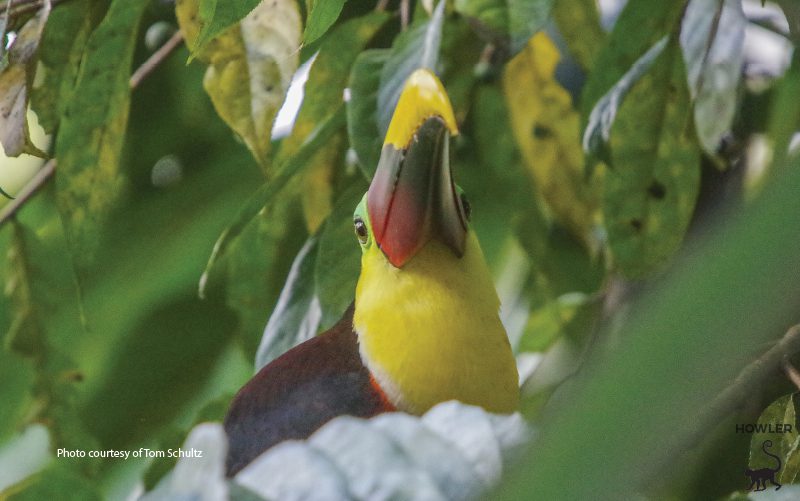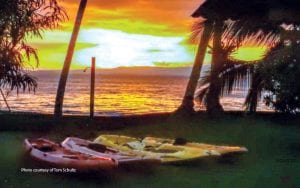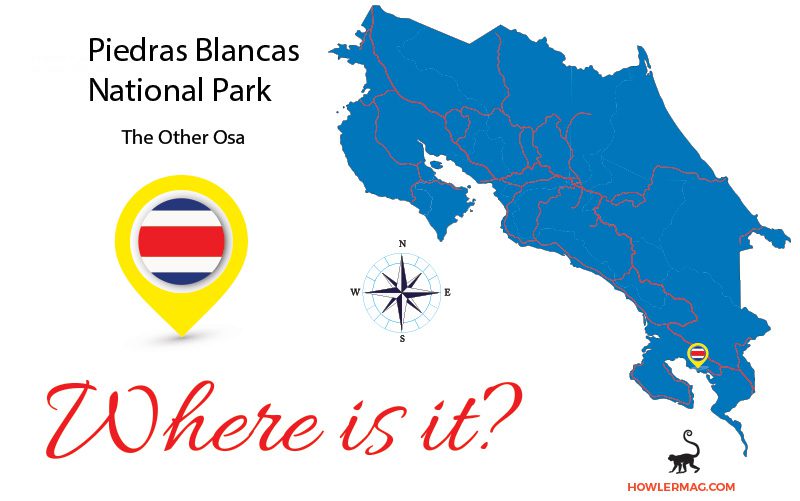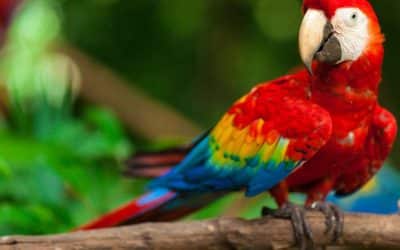Piedras Blancas National Park: The Other Osa: Famously proclaimed by National Geographic as “the most biologically intense place on earth,” the Osa Peninsula has a special stature in Costa Rica. Home to an amazing 2.5 percent of all biodiversity on the planet, and to its last coastal tropical rainforest, Osa has become a destination for not only researchers, but also nature-loving and ecologically minded tourists. With most peninsula-bound visitors heading to the renowned Corcovado National Park, few even realize it is not the only national park in Osa.
A little history
Our story begins with an Austrian classical violinist, Michael Schnitzler, who in his youth was an avid hiker, world traveler, and environmental activist. Having arrived in Costa Rica in the late 1980s, he bought a small house in the Osa area near La Gamba. Alarmed at the illegal logging activity he witnessed, Schnitzler started a non-government organization called “Rainforest of the Austrians” to protect the area.

In 1991, the group succeeded in having a designated portion of Corcovado National Park named as the Esquinas Sector (named after the Esquinas River). However, as has often occurred in Costa Rica, it was a park “on paper” only, with the land and logging rights still in private hands. Schnitzler launched a fundraising campaign and was ultimately able to purchase more than 10,000 acres, which became Piedras Blancas National Park in 1993. The park still has an Austrian research station in La Gamba.
Now spanning 14,000 hectares (about 35,000) acres, Piedras Blancas National Park stretches along the Golfo Dulce coast, from near Rincón de Osa and the Esquinas River, to Golfito. With its lush tropical forests and plethora of indigenous plants and wildlife, the park safeguards an ecologically important and diverse biological corridor of the northern Golfo. With mangroves and some of Costa Rica’s last remaining coral outcrops, it is also one of the few remaining jaguar habitats in the country. The fauna population includes approximately 140 species of mammals, 350 bird species, 37 kinds of amphibians and 42 reptiles, as well as several thousand types of insects.
Boat travel is highly recommended
for any day visit, given the opportunity
to look for dolphins, whales and even whale sharks.
Wanna get away
The exotic beauty of Piedras Blancas lies largely in its remoteness. La Gamba is the only spot you can drive to; otherwise, you need a boat. For those interested, La Gamba is also the shortcut to the Deposito in Golfito. Day trips by boat are available out of Golfito or from Puerto Jiménez, on the other side of the Golfo Dulce.
Boat travel is highly recommended for any day visit, given the opportunity to look for dolphins, whales and even whale sharks en route in the Golfo. You can also have a nice snorkeling experience in one of several protected coral head areas.
Another option for seeing nature up close is to head up the Esquinas River by boat or kayak into the mangroves. There are several tour companies offering great itineraries. On our most recent visit, we chose Changing Tide Tours, run by a young British turtle researcher married to a Corcovado park ranger.
A real highlight of some boat outings to Piedras Blancas is the Osa Wildlife Sanctuary. Within the national park’s protection, Carol Patrick has rehabilitated on the premises, and returned to nature if possible, hundreds of animals, birds and reptiles since 2003. Visiting the sanctuary is truly a rewarding and unique experience. Once you meet Sweetie the spider monkey, you’ll understand.
For a longer stay in the park, there are two possibilities. One is to take the only land entrance from the town of La Gamba, where the still-active Austrian biological research station, Tropenstation, is located. With enough planning, you may be able to stay there; we did in 2015. The second option, Esquinas Rainforest Lodge, is down the dirt road from the station. Arrangements can be made for pickup at the Golfito airport for anyone wanting to fly in. Known for its hiking trails and wildlife, especially birds, this remote lodge is an exquisite place to get away. You can even hike all the way through the jungle to the beach.
If you’re seeking even more remoteness, there are three eco-lodges along the park coast, all accessible only by boat. Departure is from either Golfito or Puerto Jiménez, which you can reach by land or air. We have stayed at Saladero Eco Lodge, which has cabins and “glamping” accommodations. You can also experience the wilds of Piedras Blancas at Playa Cativo Lodge and Playa Nicuesa Rainforest Lodge.
All of these lodges offer hiking, bird watching, kayaking, snorkeling, and even sport fishing trips. With prices ranging from moderate to “if you have to ask, you can’t afford it,” these are some of the best places in Costa Rica for truly being alone with nature.
Getting There
Piedras Blancas National Park
By car
From San José, take the Pan-American Highway south towards Panama to Palmar Sur, or Route 27 to the Costanera Sur. Continue some 30 kilometers further south of Palmar Sur until you see a right turn for La Gamba village. You will also see signs for Esquinas Lodge. You can also drive to Puerto Jiménez or Golfito, especially when boarding a boat to one of the lodges. All have places to safely leave your car.
By bus
The trip from San José to Puerto Jiménez takes about eight hours (Transportes Blanco at 2771-4744). Another bus takes you from San José to Golfito, also in about eight hours (Tracopa-Alfaro at 2221-4214).
By plane
Sansa flights from the Juan Santamaria Airport in San José to Puerto Jiménez depart five times a day, and to Golfito three times daily. From here you can rent a car and drive, take a taxi, or make lodge transportation arrangements for the boat trip.

Park Hours and Costs
The park is open from 8 a.m. to 4 p.m., and admission is the same as for all national parks: 1,500 colones for residents or citizens, and $15 for foreigners. (This is seldom collected directly but usually included with tour or lodging costs.)







